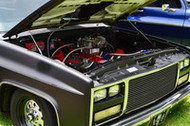Common Myths and Misconceptions About Car Maintenance
11th Feb 2016

Oil Must be Changed Every 3,000 Miles
It's a common assumption among drivers that their vehicles' oil must be changed at least once every 3,000 miles. When you get an oil change performed at a auto shop, they'll usually place a sticker inside your windshield, reminding you to return in 3,000 miles. But this unwritten "3,000-mile rule" dates back to a time when engines were designed differently. Most auto experts now say that you can drive for 7,500 to 10,000 before having to change your oil, with some vehicles going even farther at 15,000-mile intervals.
Related Reading: Choosing the Right Motor Oil
Cheap Gas is Bad for Your Car
There's an old saying that goes, "you get what you pay for," which holds true in most instances but not necessarily for gas. Premium gas simply has a higher octane rating than its standard counterpart. Edmunds.com explains that most modern-day vehicles now have built-in computers that automatically adjust for the slight variations in gas, meaning you won't notice much (if any) difference in terms of performance between the different types of qualities of gas.
Related Reading: Choosing the Right Variety of Gas
Recommended Tire Pressure is Listed on Sidewall
Another all-too-common myth is that you can find the recommended pressure for your tires by looking on the sidewall. While there's usually a PSI number listed here, it's not the manufacturer's recommendations. The pressure listed on the sidewall is the maximum amount of air the tire will safely hold. To determine the recommended pressure, look for a sticker placed inside your glove box or doorjamb.
Related Reading: TPMS and Tire Pressure Explained
You Can 'Warm Up' a Car By Allowing the Engine to Run
Most drivers have been guilty of "warming up" their car at some point in time, believing it will yield better performance. If you want to get your car ready, however, the best technique is to simply drive it. Driving it will prove far more beneficial in terms of performance that allowing the engine to run idle.
You Can Save Gas By Driving With the Windows Down and AC Off
This is not entirely wrong, but certainly not right, either. In the past, it wasn't uncommon for vehicle air conditioners to consume as much as 20% of the car's normal fuel usage. Today, however, cars and trucks use a fraction of this amount, so little that the average driver cannot tell the difference. So if you're looking for ways to save gas, you'll need to look elsewhere.
Related Reading: 5 Ways to Improve Your Car's Gas Mileage

